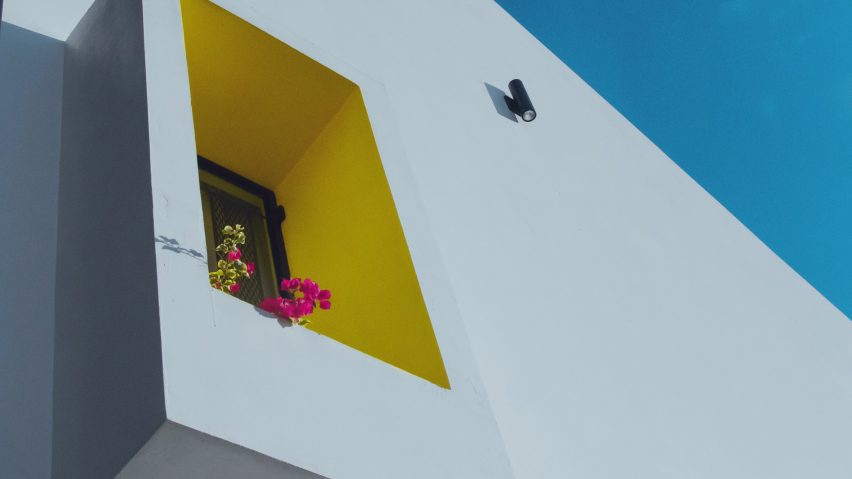
Laura Narayansingh creates her own colonial-informed house in Trinidad
ACLA Architecture director Laura Narayansingh has designed the compact Bush House on the Caribbean island of Trinidad for her family.
Narayansingh designed the 100-square-metre, two-bedroom house as a compact home for her family that incorporates elements found in Trinidad and Tobago's colonial architecture.
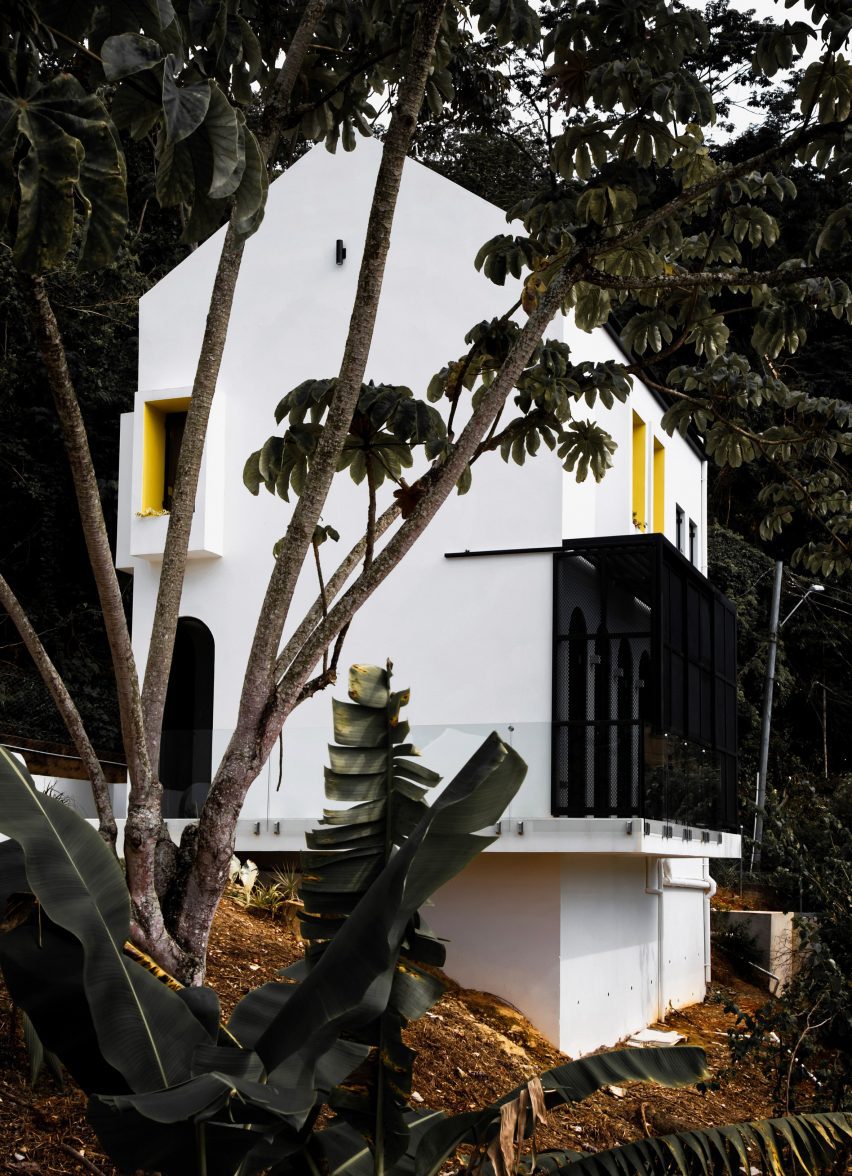
"Though the scale of this house is driven by the per square meter cost of building, its aesthetic quality is a result of my ongoing, personal search for an indigenous culture through architecture," ACLA Architecture director Narayansingh told Dezeen.
"It reinterprets successful passively-sustainable colonial Trinidadian building techniques to allow for minimal energy consumption and allows for an architecture that can be open and free from burglar proofing."
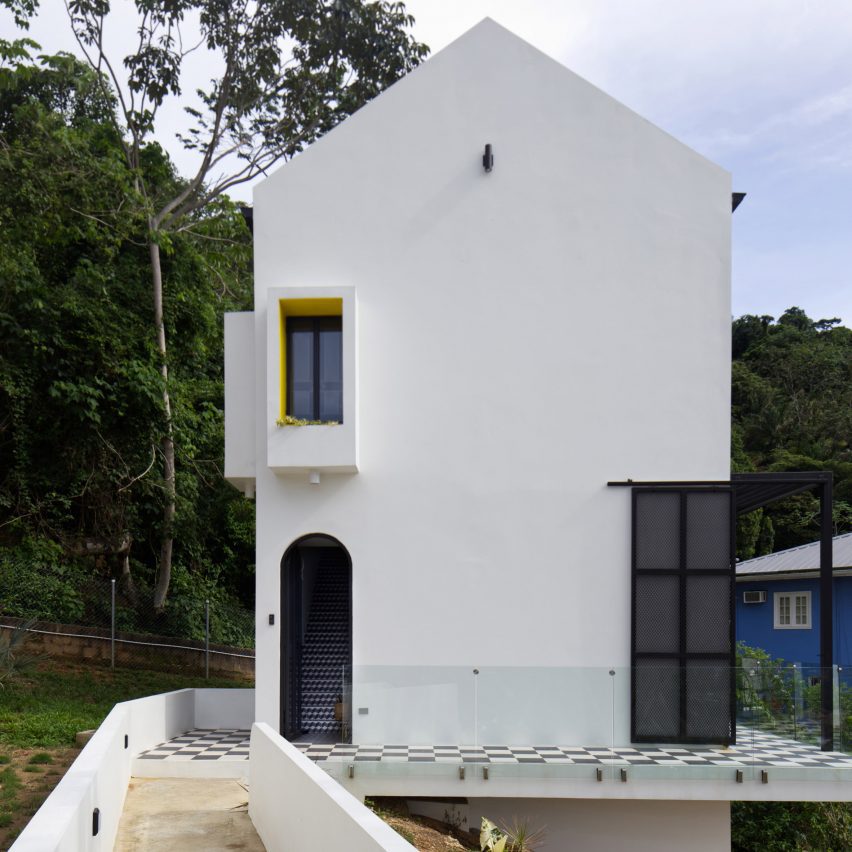
The compact house consists of an open-plan kitchen, dining and living room on the ground floor, with a pair of bedrooms and two bathrooms on the upper floor.
Informed by the island's colonial architecture, the main living space is fronted by four arched openings that let light and air into the house, while giving views out to the surrounding hillside. Another arch set on a column visually separates the seating area from the kitchen.
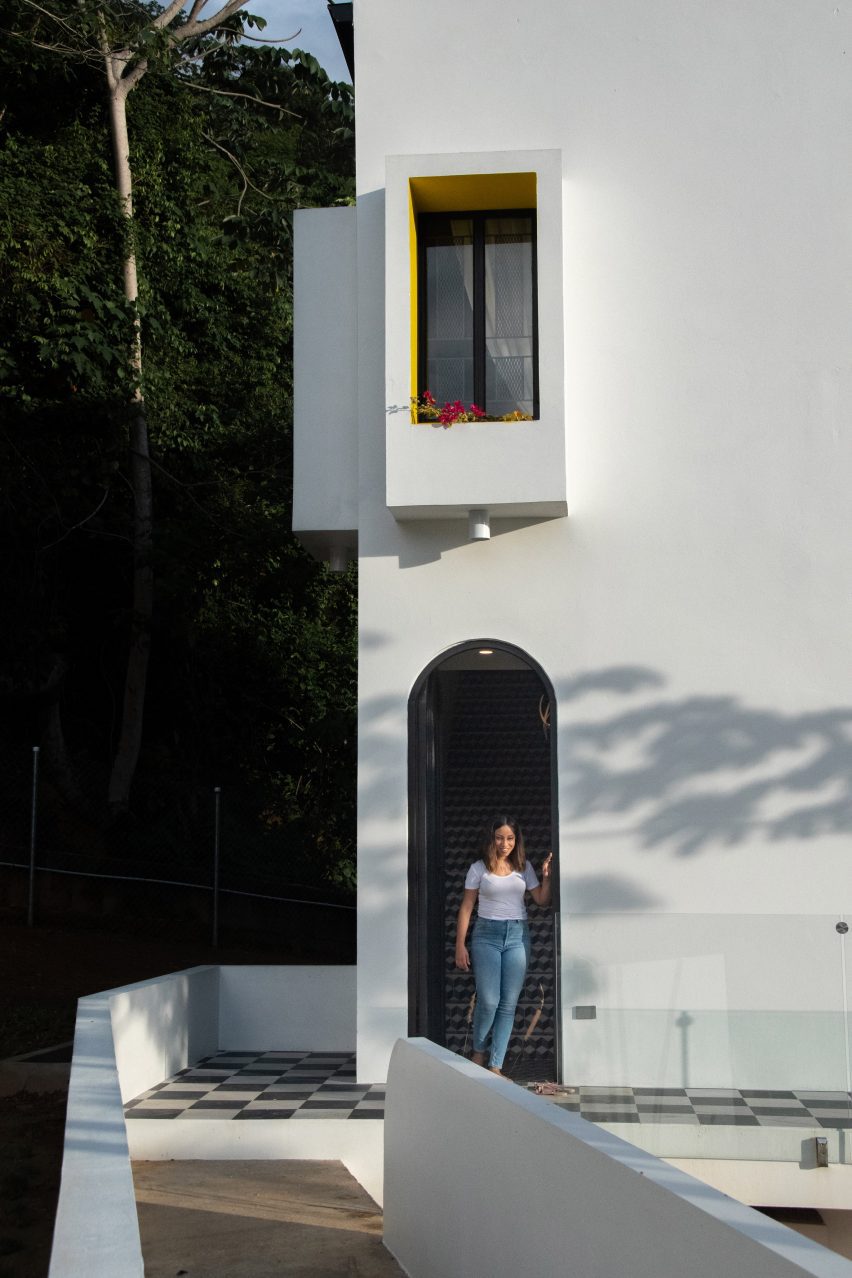
"In Trinidadian colonial architecture, views are celebrated through fretted colonnades," said Narayansingh.
"The four arches occur in the kitchen, the space in which our family spends the most time and where the view of the valley is most celebrated."
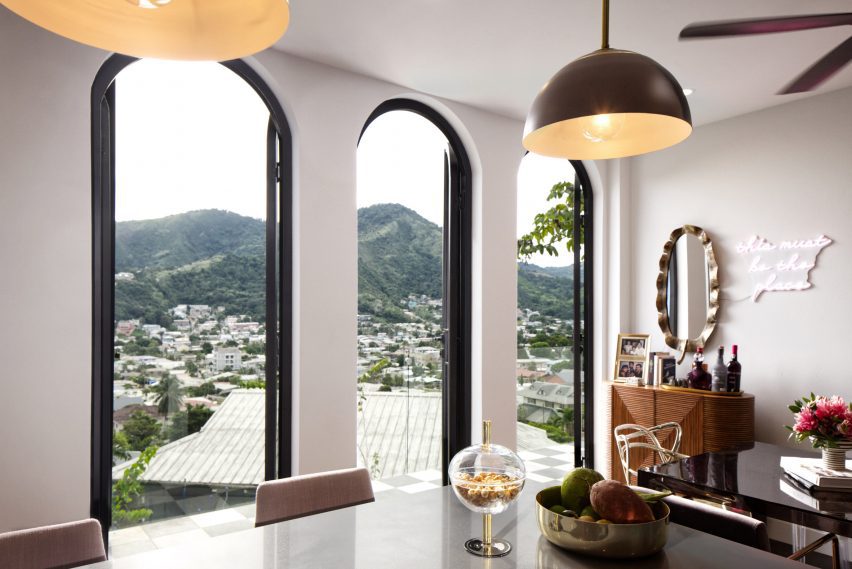
"There's something about a framed view through an arch that continuously renews your perspective through its lightness, openness and beautiful dialogue with the sky," Narayansingh continued.
"The arches are an ode to this incredibly important celebration of the breathtaking views afforded to us by our picturesque Trinidad and Tobago."
The arched openings lead out to a small terrace, which is enclosed with a retractable, cage-like structure. Narayansingh designed this as a more appealing alternative to bars usually placed on windows in the country.
"Ornate burglar proofing is prolific in our landscape but not in my work or my home," she explained. "I wanted the view of the valley without seeing the bars before it."
"The result was a breathing cage that expands and contracts, simultaneously providing security that fades to openness," she continued. "They are a conscious reminder that we have the power, through thoughtful architecture, to take hold of our freedom, as opposed to locking ourselves up in our homes through fear of crime."
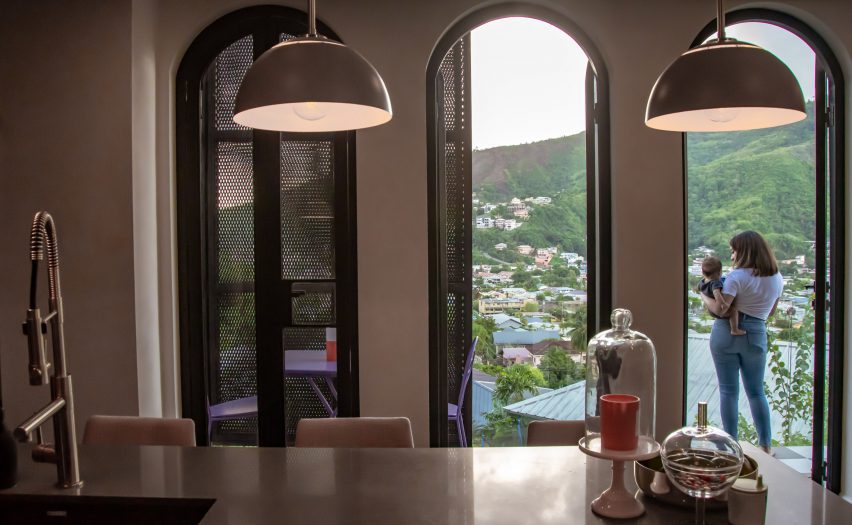
Throughout the house, Narayansingh employed passive cooling techniques to ensure the house remains cool in the country's hot weather.
Along with the large arched openings that are shaded by the cage, she placed many of the windows on the upper floors with deep reveals containing window boxes.

"Trinidad and Tobago has two seasons; the rainy season and the dry season," she explained. "In our year-round, warm, tropical climate, passive cooling was one of the most impressive and celebrated characteristics of Trinidadian colonial architecture."
"Ensuring that this home would remain cool without mechanical intervention was imperative," she continued. "For instance, the window planters connect the home space to the mountains while also providing shade to the rooms."
Another Caribbean home featured on Dezeen is the Sail House on the island of Bequia, which was designed by Studio of Environmental Architecture.
Other houses that designers have recently created for themselves include Yvette van Zyl's modernist-informed dwelling overlooking South African coast and Remi Connolly-Taylor's Maryland House in London.
The photography is by Gaby Marie Photography and Chad Lue Choy.